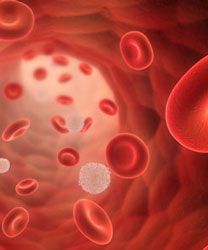Change in Treatment Administration May Reduce Osteonecrosis in Pediatric ALL
The method of treatment administration in the JACLS ALL-97 and ALL-02 trials may have contributed to a lower incidence of osteonecrosis in Japanese children with acute lymphoblastic leukemia.
mcl

The method of treatment administration in the JACLS ALL-97 and ALL-02 trials may have contributed to a lower incidence of osteonecrosis in Japanese children with acute lymphoblastic leukemia (ALL), according to a retrospective analysis published in the Journal of Clinical Oncology.
The incidence and characteristics of ON were determined in the retrospective study of patients with ALL (n = 1662) enrolled in 2 studies from the Japan Association of Childhood Leukemia Study (JACLS) group, ALL-97 (n = 635) and ALL-02 (n = 1027). Twelve (1.9%) patients in the ALL-97 trial and 12 (1.2%) in the ALL-02 trial developed symptomatic osteonecrosis either during (n = 13) or after (n = 11) treatment.
Patients enrolled in each study were newly diagnosed with either B-cell precursor or T-cell ALL. Those with mature B-ALL and infant ALL were excluded. Philadelphia chromosome—positive ALL was included only in ALL-97. The median patient age was 6.3 ± 4.2 years in ALL-97 and 5.9 ± 3.8 years for those in ALL-02. ALL-02 included a broader age range, but a smaller proportion of patients who were aged ≥10 years (26.3% vs 20.4%).
The overall 5-year cumulative incidence of osteonecrosis was 1.8% (95% CI, 1.0-3.2) in ALL-97 and 1.2% (95% CI, 0.7-2.2) in ALL-02. In All-97, 5-year cumulative incidence of osteonecrosis was 0% among patients aged <10 years and 7.2% (95% CI, 4.0-12.6) in those aged ≥10 years in those in ALL-97. Those percentages were 0.1% (95% CI, 0-0.9) and 5.9% (95% CI, 3.3-10.4) in ALL-02, respectively.
The incidence of osteonecrosis in patients aged ≥10 years exceeded 10.0% in most previous studies, and age proved to be a prognostic factor for osteonecrosis in ALL-97 and ALL-02, as well.
Investigators reviewed dosing and administration schemes from 10 previous studies examining a similarly-aged patient population including UKMRC-2003, DOCG-ALL9, and BFM-95. The dose of dexamethasone and prednisolone was similar among all studies and cumulative dose of dexamethasone, including ALL-97 and ALL-02, ranged from a low of 2755 mg/m2 in AIEOP-BFM-2000 to a high of 18,631 mg/m2 in CCLSG ALL 2004.
Dexamethasone was administered concurrently with L-asparaginase in all those studies, while administration of L-asparaginase was combined with prednisolone, not dexamethasone, in ALL-97 and ALL-02. Furthermore, combined use of dexamethasone and L-asparaginase occurred only in the induction phase in JACLS ALL-97 and ALL-02, and dexamethasone was only administered for 7 days. In the previous studies, L-asparaginase was administered with prednisolone 3 times per week after day 15.
Those changes in administration may have resulted in less osteonecrosis.
“The combined use of prednisolone and L-asparaginase, rather than dexamethasone and L-asparaginase, may be associated with the observed lower rates of osteonecrosis development,” first author Kenichi Sakamoto, MD, department of pediatrics, Kyoto Prefectural University of Medicine, Graduate School of Medical Science, Kyoto, Japan, and colleagues wrote.
“Not only the total amount of dexamethasone, but also how dexamethasone and L-asparaginase are administered, which affects the clearance of dexamethasone, may be associated with the incidence of osteonecrosis in patients with ALL. Future studies will be required to determine whether the development of osteonecrosis is associated with the combined treatment of corticosteroids and L-asparaginase,” Sakamoto et al concluded.
Sakamoto K, Imamura T, Kihira K, et al. Low Incidence of osteonecrosis in childhood acute lymphoblastic leukemia treated with ALL-97 and ALL-02 study of Japan Association of Childhood Leukemia Study Group [published online January 23, 2018]. J Clin Oncol doi: 10.1200/JCO.2017.75.5066.



